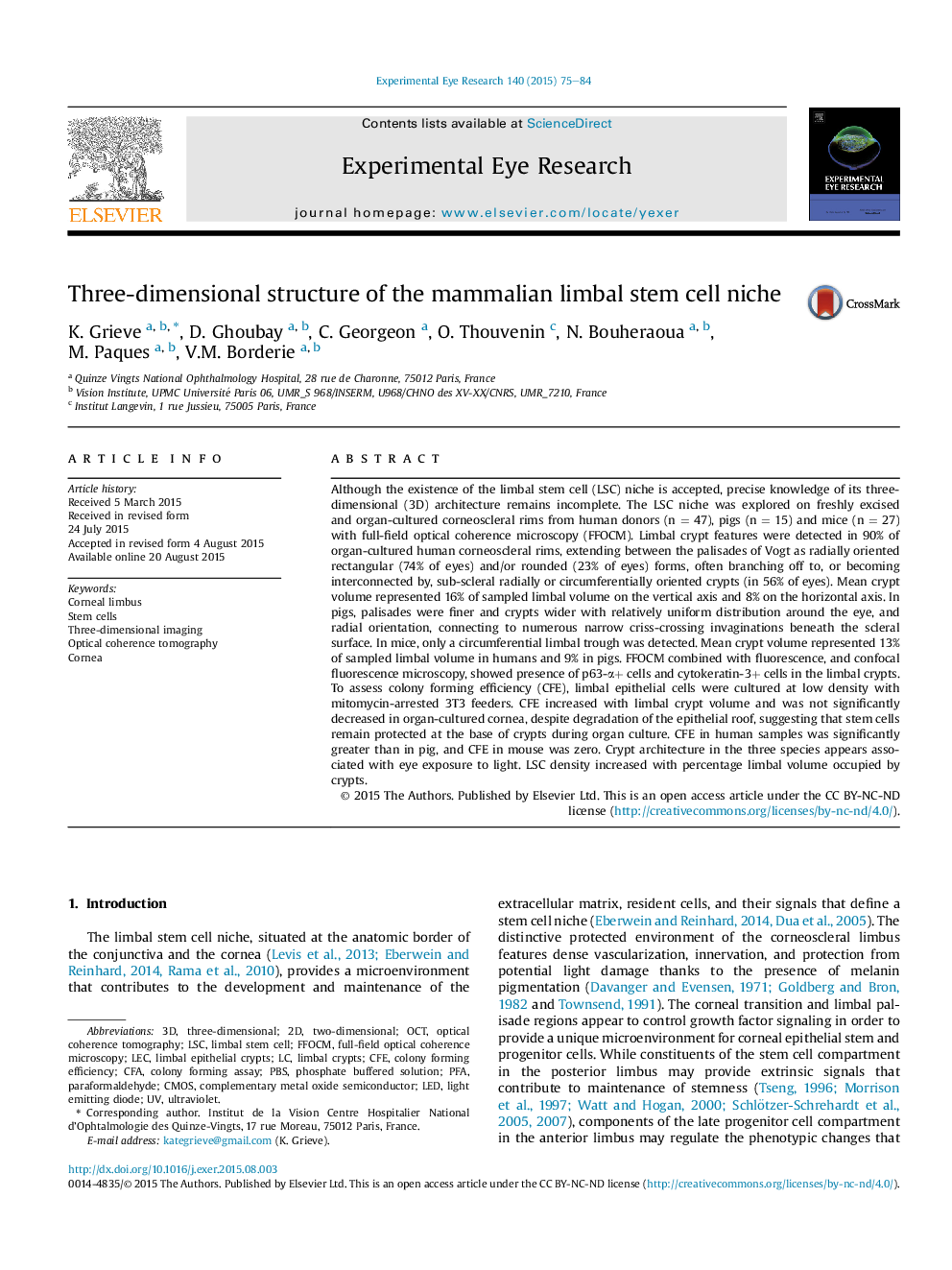| Article ID | Journal | Published Year | Pages | File Type |
|---|---|---|---|---|
| 6196389 | Experimental Eye Research | 2015 | 10 Pages |
â¢3D morphology of corneal limbal crypts varies between species.â¢Colony forming efficiency correlated with crypt-rich zones.â¢More crypts are located on the vertical than horizontal eye axis in humans.â¢Colony forming efficiency is greater in human eyes than pig or mouse.â¢Organ-cultured cornea retained similar colony forming efficiency to fresh cornea.
Although the existence of the limbal stem cell (LSC) niche is accepted, precise knowledge of its three-dimensional (3D) architecture remains incomplete. The LSC niche was explored on freshly excised and organ-cultured corneoscleral rims from human donors (n = 47), pigs (n = 15) and mice (n = 27) with full-field optical coherence microscopy (FFOCM). Limbal crypt features were detected in 90% of organ-cultured human corneoscleral rims, extending between the palisades of Vogt as radially oriented rectangular (74% of eyes) and/or rounded (23% of eyes) forms, often branching off to, or becoming interconnected by, sub-scleral radially or circumferentially oriented crypts (in 56% of eyes). Mean crypt volume represented 16% of sampled limbal volume on the vertical axis and 8% on the horizontal axis. In pigs, palisades were finer and crypts wider with relatively uniform distribution around the eye, and radial orientation, connecting to numerous narrow criss-crossing invaginations beneath the scleral surface. In mice, only a circumferential limbal trough was detected. Mean crypt volume represented 13% of sampled limbal volume in humans and 9% in pigs. FFOCM combined with fluorescence, and confocal fluorescence microscopy, showed presence of p63-α+ cells and cytokeratin-3+ cells in the limbal crypts. To assess colony forming efficiency (CFE), limbal epithelial cells were cultured at low density with mitomycin-arrested 3T3 feeders. CFE increased with limbal crypt volume and was not significantly decreased in organ-cultured cornea, despite degradation of the epithelial roof, suggesting that stem cells remain protected at the base of crypts during organ culture. CFE in human samples was significantly greater than in pig, and CFE in mouse was zero. Crypt architecture in the three species appears associated with eye exposure to light. LSC density increased with percentage limbal volume occupied by crypts.
Graphical abstractDownload high-res image (547KB)Download full-size image
